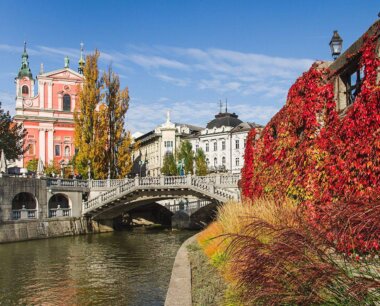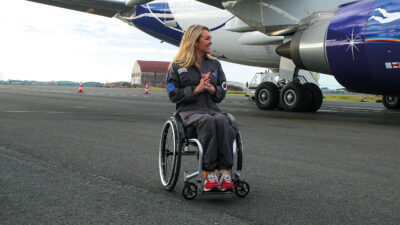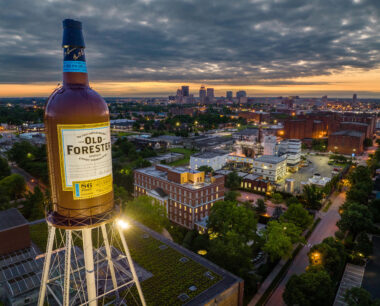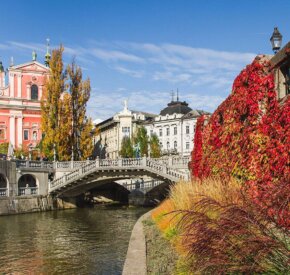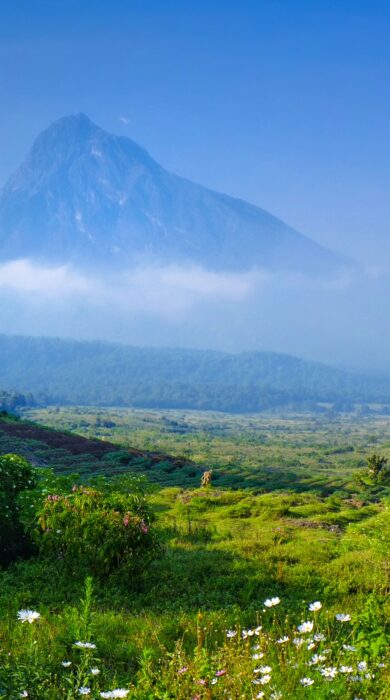
Underground in the Congo
200m below ground in eastern Congo, author Conor Woodman experiences the sharp end of capitalism
The air in the mine was hot, damp and stifling. I could hear myself panting in the darkness. I could only see where I was by shooting off a picture and looking at my camera’s LCD screen. The mineshaft was propped up by roughly fashioned branches from the jungle outside; at the bottom, 200m below the surface, it was less than a metre high.
This was more excitement than I’d bargained for. I’d been determined not to go all the way down this cramped Congolese mineshaft myself – but then circumstances took over. Par for the course in the Democratic Republic of Congo.
In front of me, miner Boniface prepared to take a hammer and pick to the seam of minerals in the rock-face. As he brought down his hammer, dirt began to fall from the precarious ceiling above, and I knew I’d seen enough – it was time to get out of there.
Despite the fact that we’re all travelling more, that the world seems to be becoming smaller and smaller, there are still some places that remain the stuff of myth and legend. Eastern Congo is one of those places. The Foreign Office, common sense and even your mother will tell you not to go there, but the curious and adventurous traveller knows that if you want to really see what it’s like, you have to go yourself.
This is very much the ethos of my new book Unfair Trade: How Big Business Exploits the World’s Poor – and Why It Doesn’t Have To. My mission over the past year has been to experience for myself what life is like for those who work at the start of the supply chain, where life is hard and often dangerous. Researching this book has taken me around the globe, passing through not just DR Congo but, among others, Côte d’Ivoire, Afghanistan and the borders of Burma and northern Laos.
Before independence in 1960, DRC was actually quite the de rigueur adventure holiday destination. Wealthy Europeans keen to see Africa’s ‘heart of darkness’ took cruises up the Congo River on luxurious steamships, stopping off at well-appointed cities with old colonial names such as Leopoldville and Stanleyville. Those cities were built by the Belgians with the profits from the country’s brutally mined mineral deposits.
But ever since King Leopold of Belgium handed the country back to its people, the cities and those living in them have fallen on hard times. Congo’s recent troubles began when the ethnic genocide in neighbouring Rwanda spilt over its borders. Rwandan militia groups have occupied the jungles of eastern Congo ever since, terrorising its people while simultaneously profiting from the trade in its minerals.
Back-to-back wars have left five million people dead in the past ten years. If what has happened there had happened in Europe it would have been labelled the Third World War; instead, Congo has been overlooked by the world’s media and abandoned by travellers as a no-go area.
But that might be about to change. For now at least, much of the fighting has been brought under control by the United Nations peacekeeping forces, which are working in conjunction with the Congolese Army. Many areas of eastern Congo that were inaccessible have opened up again. In the south of the region is Virunga National Park, which as well as being rich in minerals is home to one of the world’s last remaining populations of mountain gorillas – which receive far fewer visitors than their cousins on the Rwandan side of the border.
The reason I was in DR Congo on this trip was to investigate the trade in minerals from eastern Congo, specifically cassiterite, a mineral that is necessary for the production of the chips that go into laptops and cell-phones. I’d come to try to put some flesh on the ethical debate about trading in minerals from conflict areas by spending time talking with miners such as Boniface.
While the West debates the rights and wrongs of a ban on the mineral trade, these brave men risk their lives every day when they descend into precariously constructed mineshafts in search of minerals. They don’t have any association with militia groups, nor have they ever been involved in the fighting. For Boniface and the other miners, digging is simply their only way to make a living.
It’s a dilemma for the international community, but listening to the miners, it was clear the last thing they want is for us to turn our backs and walk away. Many dream of working for a Western mining company, with proper safety equipment and a weekly wage. But for now, mining this way is how they feed their families, so if it were banned, they would only be forced to find ways to smuggle the spoils out of the country.
Travelling in Congo is not an activity to be taken lightly, but it can offer wonderful surprises. While travelling to the mining areas near Twangiza in South Kivu, I encountered an old man standing in the middle of the road with a long beard and an even longer black snake draped over his shoulders. The jungles either side of this road are still active with militia groups so my driver, Amani, stopped very reluctantly.
I wanted to ask the man whether the snake he was carrying was poisonous.
“Yes,” he replied, “but it does not bite me.” He smiled and confidently held up the snake to show me. Amani began to wind up his window while I asked the man why he was safe from the snake’s bite.
“Because I am mfumu [a wizard],” he said.
Of course – that was the only reasonable explanation. I wished the man luck and carried on my way, happy that I’d stopped, happy that I’d visited at all. Well, you don’t get to meet a wizard every day – or in every country.
Congo Top 3
1. Climb Nyiragongo volcano, just outside Goma
2. Volunteer at Action Kivu, a cooperative that helps conflict victims
3.Track mountain gorillas in Virunga National Park
Getting to DR congo
The cheapest and most reliable way to get to DRC is to fly to Rwanda and catch a bus to the border at Goma (about three hours). There are no direct UK-Rwanda flights; Brussels Airlines flies London-Brussels-Kigali – flight time is around eight hours, plus stopovers. Other airlines fly UK-Nairobi, from where you can connect to Kigali or DRC’s capital Kinshasa.
Visas are required by UK nationals; arrange them in advance by contacting the DRC Embassy (0207 278 9825).
A yellow fever certificate is mandatory.
For the latest travel advice, check www.fco.gov.uk; the Foreign Office currently advises against travel to DRC.
Conor Woodman’s book Unfair Trade (Random House, £11.99) is published in May
